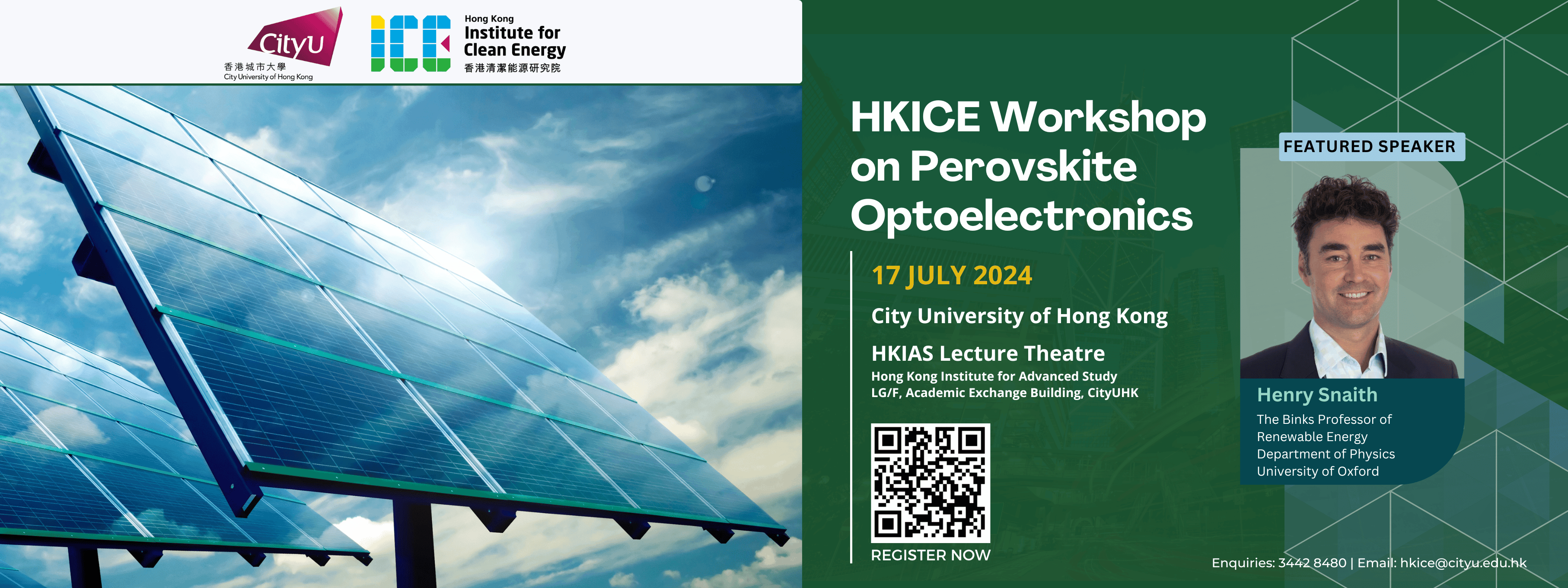Distinguished Lecture Speaker
Biography
Henry Snaith is the Binks Professor or Renewable Energy in the Physics Department of the University of Oxford, and co-Founder and Chief Scientific Officer of Oxford PV and Helio Display Materials. He works on new materials and devices for photovoltaic solar energy conversion and optoelectronic applications. His multidisciplinary work spans activities from new materials discovery and synthesis, through device optimization to fundamental spectroscopic and theoretical investigations. Prof Snaith discovered that a new type of solar cell material, namely metal halide perovskites, can produce extremely efficient solar cells when processed as a solid thin-film and “sandwiched” between two charge selective electrodes. By combining perovskites with silicon, in so-called “tandem cells” he has demonstrated efficiencies far beyond what is possible with existing commercial PV technologies, and promises to deliver the next generation of improved PV for powering the world towards net zero. He was elected as a Fellow of the Royal Society at the age of 37, for “starting a new field of research attracting both academic and industrial following”. He has also won numerous awards and accolades, including the Leigh Ann Conn Prize for Renewable Energy, the World Young Scientist Summit SDG Award, The Becquerel Prize in Photovoltaics, the Blavatnik Award for Young Scientist, the MRS Outstanding Young Investigator Award, being named one of “Natures Ten” people who mattered in 2013 and topping the rank of the world’s “most influential scientific minds”, as judged by Clarivate Analytical.
Metal halide perovskites; from a scientific curiosity to an industrialised photovoltaic technology and beyond
Henry SNAITH
Abstract
Photovoltaic (PV) solar energy is already the least expensive form of producing electricity in many geographic locations. The industry is set to increase in scale by at least another order of magnitude, and many technological innovations are being developed and implemented at the laboratory scale, implying that the roadmap for progress will continue to deliver efficiency and power output gains for decades to come. Altogether, it is inevitable that a significant fraction of our future, clean and sustainable power generation capacity will be met with PV. One of the most exciting new materials, poised to deliver significant efficiency gains for solar PV, is metal halide perovskites. These materials were only found to be remotely useful for solar energy conversion a little over a decade ago, and since then the performance of solar cells fabricated with a single thin-film of metal halide perovskites has reached the performance of the very best crystalline silicon PV cells, with multi-junction perovskite, or perovskite-on-silicon tandem cells, shooting past and beyond the efficiency levels that could ever be achieved with Silicon or even Gallium Arsenide alone.
In this seminar I give a short introduction to metal halide perovskites and present some of the key discoveries and developments that have resulted in the realisation of efficient perovskite solar cells. I will also focus upon some of the key challenges with enabling long-term operational stability and what we understand about degradation in these devices. I will further explore the prospect of multi-junction perovskite solar cells, and present some of our recent results pushing the efficiency of cells beyond two junctions. Beyond the work in Oxford University, I will highlight the industrial activity worldwide, and show some of the recent progress at Oxford PV, in the realisation of very high efficiency, industrial-scale perovskite-on-silicon tandem modules.
Beyond photovoltaics, metal halide perovskite semiconductors are finding use in a broad range of optoelectronic applications, including as radiation and light sensors, and light emitting applications. I will briefly present some opportunities and challenges with developing metal halide perovskites for perovskite LEDs, and also for use as colour conversion materials in displays and micro-LEDs.

